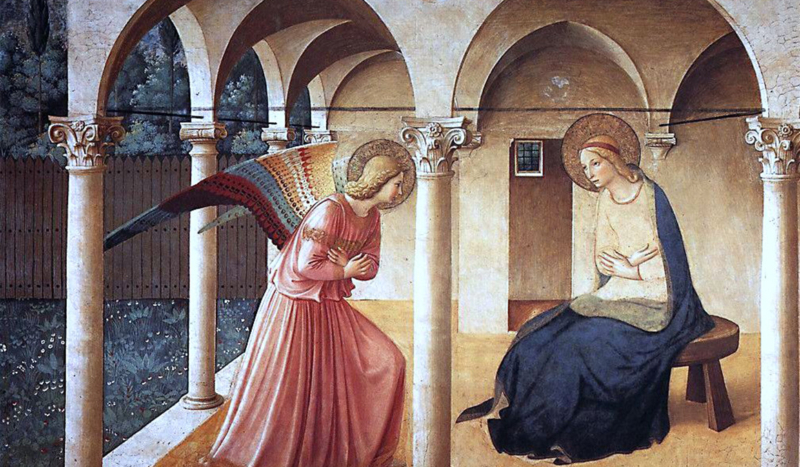
Fra Angelico / Wikimedia Commons
CV NEWS FEED // Blessed Fra Angelico, born Guido Di Pietro, was an Italian Dominican painter from the Early Renaissance, born around 1395 in Florence. He is recognized as the patron of Catholic artists.
Known only posthumously as Fra Angelico (“Brother Angel”), the deeply religious artist is celebrated for his work depicting biblical scenes, saints, and the Virgin Mary with art characterized by a delicate use of color and a keen attention to detail. His most famous works include the frescoes in the Convent of San Marco in Florence, with notable pieces such as “The Annunciation” and “The Last Judgment.”
Also called Beato Angelico, (“Blessed Angel”), Fra Angelico joined the Dominican order around 1420 in Fiesole, Italy, taking the name Fra Giovanni. He was described by Giorgio Vasari, known as the father of art history, as having “a rare and perfect talent.”
Fra Angelico’s artistic style reflects a blend of Gothic and early Renaissance elements, marked by a unique ability to convey spiritual themes and emotions. His paintings are often noted for their gentle expression and luminous quality, which help to create a sense of divine presence.
Vasari wrote in his famous work “Lives of the Artists” that Fra Angelico never retouched or repaired any of his pictures, “believing, so he said, that this was the will of God.”
“Some say that Fra Giovanni never took up his brush without first making a prayer,” Vasari also wrote. “He never made a crucifix when the tears did not course down his cheeks, while the goodness of his sincere and great soul in religion may be seen in the faces and attitudes of his figures.”
Fra Angelico likely trained as an illuminator, possibly alongside his older brother Benedetto, who was also a Dominican. His early commissions included an altarpiece for the Carthusian Monastery in Florence, although none of those works remain.
From 1408 to 1418, he worked at the Dominican friary in Cortona, painting frescoes that are now lost. Between 1418 and 1436, he resided at the convent of Fiesole, where he created various frescoes and an altarpiece, now deteriorated but restored. A notable surviving piece is the predella of the altarpiece in the National Gallery, London, which exemplifies Fra Angelico’s skill, depicting Christ in Glory surrounded by over 250 figures, including beatified Dominicans.
In 1445, Pope Eugene IV summoned Fra Angelico to Rome to paint the frescoes of the Chapel of the Holy Sacrament at St. Peter’s Basilica. Fra Angelico worked at the Vatican until 1449, designing frescoes for the Niccoline Chapel, before returning to his convent in Fiesole between 1449 and 1452 and serving as Prior. He died Feb. 18, 1455, while in Rome, having returned to continue work on the Niccoline Chapel.
Fra Angelico was reported to say, “He who does Christ’s work must stay with Christ always.”
Pope John Paul II beatified Fra Angelico on October 3, 1982, and, in 1984, declared him patron of Catholic artists, recognizing both his contributions to art and his life of faith.
Buried in Rome, the epitaph on Fra Angelico’s tomb reads: “When singing my praise, don’t liken my talents to those of Apelles. Say, rather, that, in the name of Christ, I gave all I had to the poor. The deeds that count on Earth are not the ones that count in Heaven. I, Giovanni, am the flower of Tuscany.”

